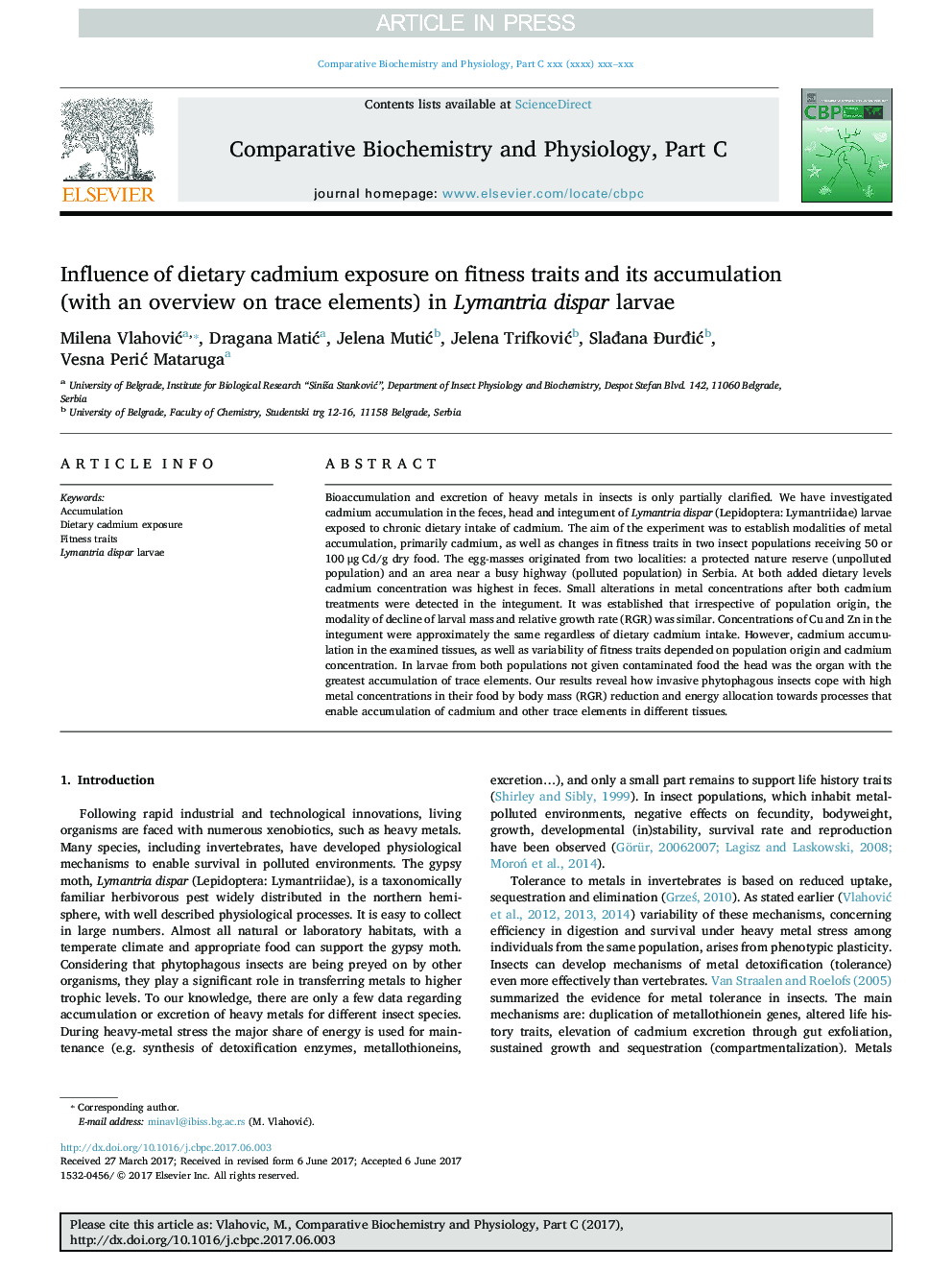| Article ID | Journal | Published Year | Pages | File Type |
|---|---|---|---|---|
| 5510567 | Comparative Biochemistry and Physiology Part C: Toxicology & Pharmacology | 2017 | 7 Pages |
Abstract
Bioaccumulation and excretion of heavy metals in insects is only partially clarified. We have investigated cadmium accumulation in the feces, head and integument of Lymantria dispar (Lepidoptera: Lymantriidae) larvae exposed to chronic dietary intake of cadmium. The aim of the experiment was to establish modalities of metal accumulation, primarily cadmium, as well as changes in fitness traits in two insect populations receiving 50 or 100 μg Cd/g dry food. The egg-masses originated from two localities: a protected nature reserve (unpolluted population) and an area near a busy highway (polluted population) in Serbia. At both added dietary levels cadmium concentration was highest in feces. Small alterations in metal concentrations after both cadmium treatments were detected in the integument. It was established that irrespective of population origin, the modality of decline of larval mass and relative growth rate (RGR) was similar. Concentrations of Cu and Zn in the integument were approximately the same regardless of dietary cadmium intake. However, cadmium accumulation in the examined tissues, as well as variability of fitness traits depended on population origin and cadmium concentration. In larvae from both populations not given contaminated food the head was the organ with the greatest accumulation of trace elements. Our results reveal how invasive phytophagous insects cope with high metal concentrations in their food by body mass (RGR) reduction and energy allocation towards processes that enable accumulation of cadmium and other trace elements in different tissues.
Keywords
Related Topics
Life Sciences
Biochemistry, Genetics and Molecular Biology
Biochemistry
Authors
Milena VlahoviÄ, Dragana MatiÄ, Jelena MutiÄ, Jelena TrifkoviÄ, SlaÄana ÄurÄiÄ, Vesna PeriÄ Mataruga,
